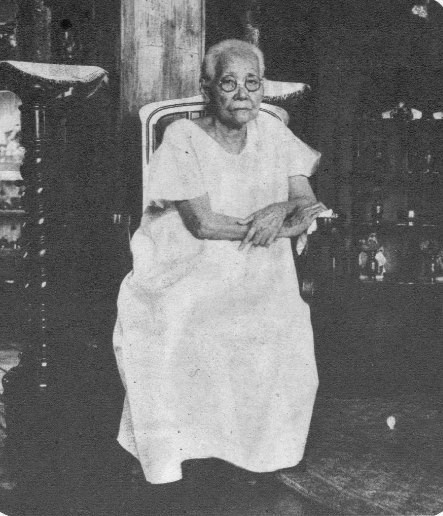 |
| One of the last photos of Jose Rizal's sister Narcisa, taken a couple of years before her passing in 1939. |
In a newspaper interview, Narcisa mentioned that the character of Sisa in the Noli Me Tangere was actually based not only on her name but also on the life she had as a mother. She confided that she received a letter from her brother telling her that he was adopting her nickname for one of the characters in a novel (Noli Me Tangere) which he was writing that moment in Berlin. She believed it was perhaps her experience of losing two children in infancy that triggered her brother to do so—the sorrow of a mother, with all her loyalty to her husband and devotion to her children. But the character of the searching Sisa was rather prophetic. Years later, Narcisa would then look around the "arrabales" (outskirts) of Manila, trying to locate where the Spaniards brought the remains of her executed brother. Searching around like a fool perhaps? Like Sisa?
Narcisa Rizal Lopez's search that faithful day of December brought her by chance to the abandoned Old Paco Cemetery where she noticed a group of Guardia Civil. It was highly unusual for the Guardia Civil to be there. She went inside without being questioned. Then Narcisa noticed freshly dug earth, roughly the length of a man. She had the inclination that beneath it lay her brother's mortal remains.
Narcisa had a plaque made with the initials of her brother in reverse, R.P.J., and bribed the cemetery guardian to mark it at the site. Hoping that someday, in better circumstances, they could retrieve the body and give it a proper burial.
Sometimes we need such stories to value more our heroes and the people who surrounded them during their times.
 |
| Truly, a formidable speaker in getting young people into the habit of reading. This was 1934, Narcisa Rizal-Lopez speaking at the Luneta for the Book Week program. She reminded the audience about the importance given by her brother on books and reading. |
 |
| Narcisa Rizal Lopez signing her name in the campaign for women's suffrage in the Philippines. Photo-May 22. 1935. -- The 1935 Philippine constitution prescribed that the right of suffrage would be extended to women provided that 300,000 women voted in its favor in a national plebiscite. A General Council of Women was then established in Manila to direct the plebiscite campaign. Its aim was to draw the support of the broadest number of women and launch various forms of campaign through public speeches, mass media and personal connections. As it turned out, 447,725 women voted yes for this measure in the 1937 Philippine women's suffrage plebiscite. |



.png)


Comments
Post a Comment